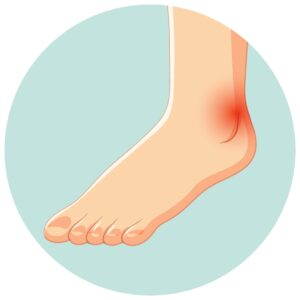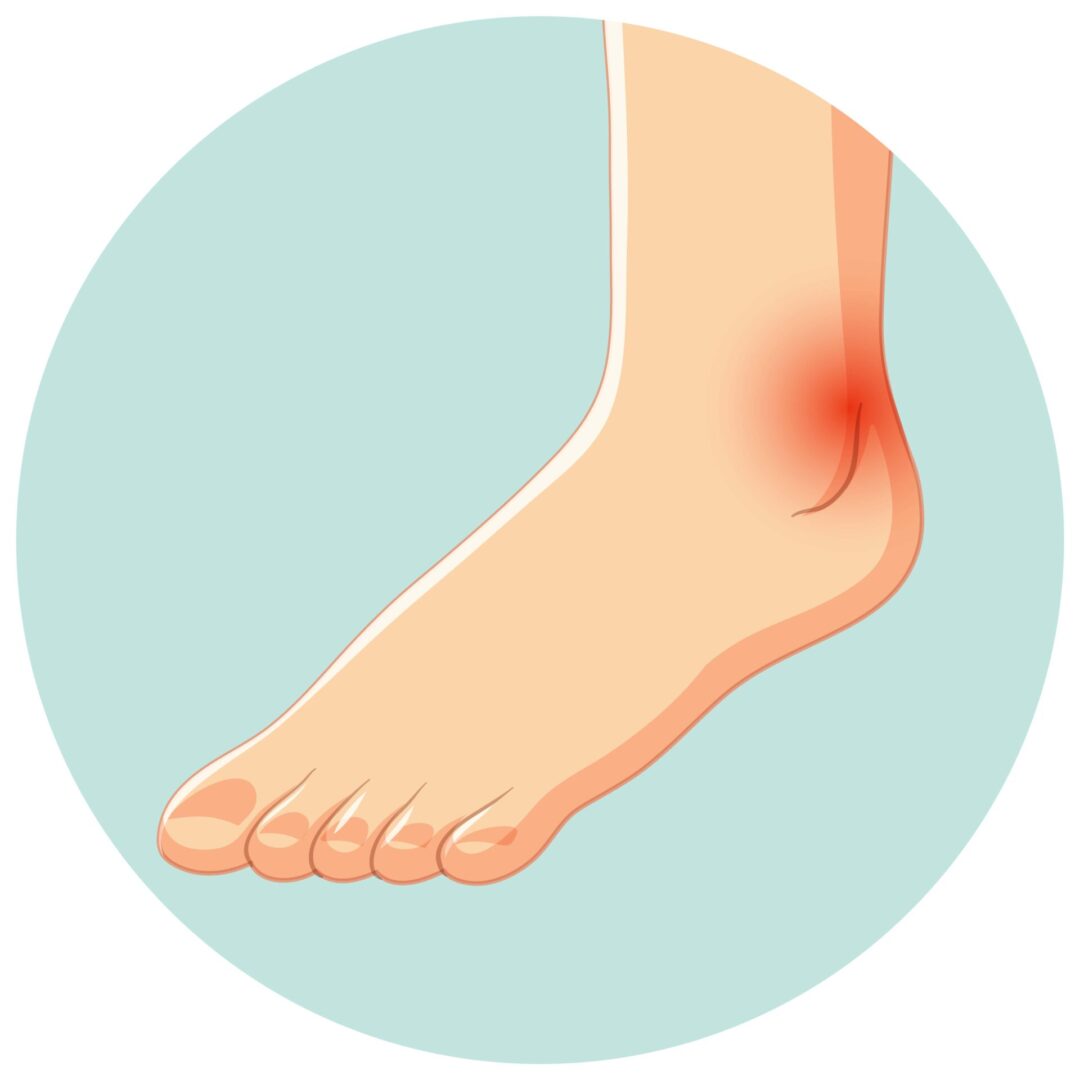Flat Foot Problems

Sudden pain on the top of your foot can be a perplexing and uncomfortable experience. Whether it starts after physical activity or seemingly out of nowhere, this type of pain can make daily activities challenging. Understanding the underlying causes, symptoms, and treatment options is critical to addressing and preventing the issue from worsening.
In this comprehensive blog by a foot care specialist in GTA, we’ll explore why the top of your foot might hurt suddenly, the possible causes, and the steps you can take to relieve the pain and get back on your feet.
Common Causes of Pain on the Top of the Foot
Overuse and Extensor Tendonitis
One of the most common causes of sudden pain on the top of the foot is overuse, which can lead to extensor tendonitis. The extensor tendons run along the top of the foot and help lift your toes. Repetitive activities, such as running, walking, or standing for long periods, can strain these tendons, resulting in inflammation and pain.
Symptoms of Extensor Tendonitis include:
- Tenderness along the top of the foot
- Swelling
- Pain that worsens with activity and improves with rest
If you’ve recently increased your physical activity or started a new exercise routine, overuse may be the culprit. Resting, icing the area, and wearing supportive footwear can help reduce symptoms and promote healing.
Stress Fractures
Another common cause of sudden foot pain is a stress fracture, particularly in the metatarsal bones at the top of the foot. Stress fractures are small cracks in the bones that develop gradually due to repeated impact, especially during running or jumping.
Symptoms of a stress fracture include:
- Sharp, localized pain on the top of the foot
- Swelling or bruising
- Pain that worsens with activity and improves with rest
Stress fractures require prompt treatment to prevent the injury from worsening. Resting, applying ice, and using protective footwear or a brace can help manage the pain, but in severe cases, medical attention may be necessary to ensure proper healing.
Foot Structure: Flat Feet or High Arches
The structure of your foot can also contribute to pain on the top. People with flat feet or high arches are more prone to foot problems due to the uneven weight distribution on the foot. Flat foot problems often strain the muscles and tendons at the top of the foot, while those with high arches may put excessive pressure on the metatarsals.
Custom orthotics or shoes with proper arch support can help alleviate pain caused by structural issues, ensuring that the foot is properly supported during movement.
Nerve Compression (Peroneal Nerve Entrapment)
Nerve compression can also cause pain on the top of the foot. One common condition is peroneal nerve entrapment, where the nerve running along the outside of the foot becomes compressed, leading to sharp, shooting pain, numbness, or tingling.
Wearing tight shoes or improper footwear can aggravate this condition. If you experience these symptoms, switching to shoes with a broader toe box and avoiding high-impact activities can help relieve pressure on the nerve and reduce discomfort.
Arthritis and Gout
Arthritis, particularly osteoarthritis, can cause inflammation and pain in the joints of the foot, including the top. As the cartilage in the joints wears down over time, it can lead to stiffness, swelling, and pain. Rheumatoid arthritis may also cause similar symptoms.
Gout, a type of arthritis caused by the buildup of uric acid crystals, can also cause sudden, severe pain on the top of the foot. Gout typically affects the big toe but can extend to other parts of the foot, causing intense pain and swelling.
If you suspect arthritis or gout as the cause of your foot pain, consult a healthcare provider for a proper diagnosis and treatment plan. Anti-inflammatory medications, lifestyle changes, and dietary adjustments can help manage the symptoms of these conditions.
Symptoms to Watch Out For
While the causes of sudden pain on the top of the foot may vary, common symptoms include:
- Sharp or aching pain that worsens with activity
- Swelling or bruising
- Redness or inflammation
- Numbness or tingling sensations
- Difficulty putting weight on the foot
If you experience any of these symptoms that do not improve with rest or home remedies, seeking medical advice to rule out more severe conditions is essential.
Treatment Options for Pain on the Top of the Foot
Rest, Ice, and Elevation (RICE)
For most minor injuries or overuse conditions, the RICE method is an effective way to reduce pain and swelling:
- Rest: Avoid activities that put stress on the affected foot.
- Ice: Apply an ice pack to the top of the foot for 20 minutes daily to reduce inflammation.
- Compression: Use a bandage to help reduce swelling.
- Elevation: Keep your foot elevated to decrease swelling.
Supportive Footwear and Orthotics
Proper shoes with good arch support can prevent and alleviate foot pain, primarily if the issue is related to flat feet or high arches. Custom orthotics can provide additional support, ensuring that your foot is aligned correctly and reducing the strain on the muscles and tendons.
Physical Therapy
If your foot pain is caused by overuse or biomechanical issues, a physical therapist can help you strengthen the muscles in your foot and improve your gait. They may also recommend specific exercises to alleviate strain on the tendons and joints.
Medication and Corticosteroid Injections
Over-the-counter pain relievers like ibuprofen can help manage pain and reduce inflammation. In more severe cases, your doctor may recommend corticosteroid injections to alleviate pain and swelling.
Surgery
In rare cases, such as severe stress fractures or nerve compression, surgery may be necessary to repair broken bones or decompress the affected nerve. Surgery is typically a last resort after other treatment options have been exhausted.
Prevention Tips to Avoid Future Foot Pain
Preventing sudden foot pain is often a matter of taking care of your feet and making intelligent choices regarding footwear and activity levels. Here are some tips to help you avoid future pain:
- Wear shoes that fit correctly and provide adequate support.
- Gradually increase the intensity of your physical activity to prevent overuse injuries.
- Stretch and strengthen your foot muscles regularly to maintain flexibility.
External Resources for Foot Health
For more information about specific foot-related issues and treatments, check out the following resources:
- Flat Foot Problems – Learn more about the challenges of flat feet and how to manage them effectively.
- What is Trench Foot – Discover the symptoms and treatment options for trench foot, a condition caused by prolonged exposure to cold and wet conditions.
- Effective Treatment for Dry Feet – Explore remedies for dry, cracked feet and how to maintain soft, healthy skin.
- Foot Wiping Benefits – Understand why proper foot hygiene is essential for preventing infections and maintaining overall foot health.
- The Best Way to Treat a Blister on Your Foot – Find out how to care for blisters on your feet to avoid infections and promote faster healing.
Conclusion: Take Action on Sudden Foot Pain
Sudden pain on the top of your foot can have various causes, ranging from overuse and nerve compression to stress fractures and arthritis. Understanding the underlying cause of your pain is essential to finding the proper treatment and preventing further damage.
If you’re still asking yourself, Why does the top of my foot suddenly hurt? It’s time to consult a healthcare provider for an accurate diagnosis and tailored treatment plan. With the proper care and prevention strategies, you can get back on your feet and stay active and pain-free.
About Author
Hi, I’m Arezou Hassani, a Chiropodist practicing in Ontario, Canada. I hold a Bachelor of Science in Psychology and an Advanced Diploma in Chiropody. As a member of the College of Chiropodists of Ontario and other professional organizations, I have extensive experience treating foot issues for patients of all ages. I founded Footwyse to bridge innovative research with practical foot care solutions, offering virtual consultations and curated products. I’m passionate about helping people achieve optimal foot health and invite you to join me in this journey toward healthier feet.

